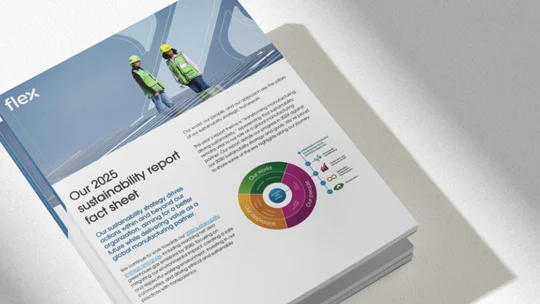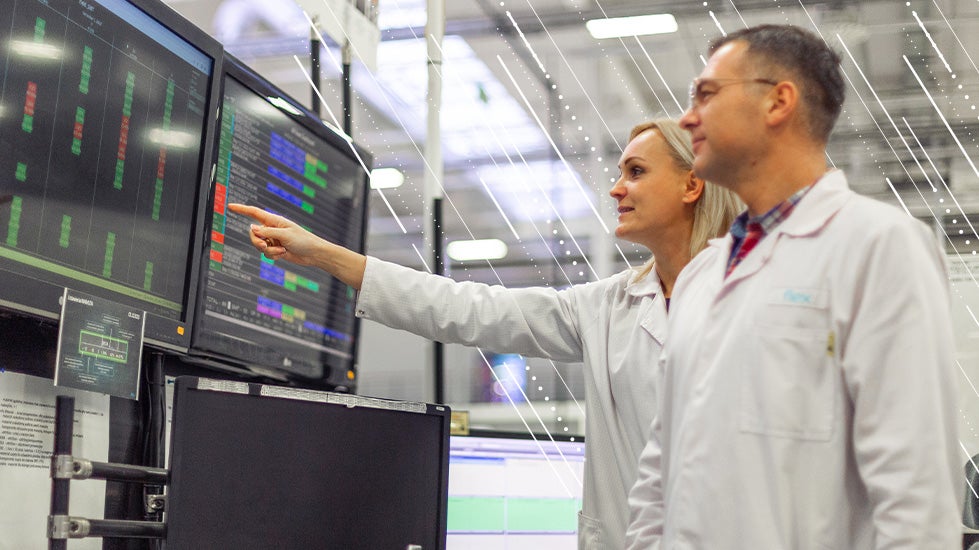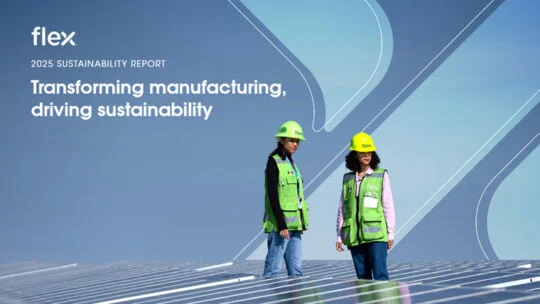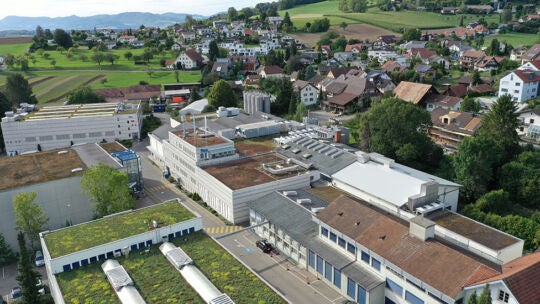
我们生活和工作在一个互联互通的世界,无论个人还是企业,都是如此。一个组织的影响力并非始于其内部,也并非止于其内部,尤其是在涉及可持续发展影响和结果。链条中的每个环节都会促进或阻碍组织实现整体可持续发展目标和更可持续的未来。

降低风险要求公司在制定长期发展路线图时保持问责制和透明度。这需要深入了解业务的每个环节(包括组织合作的供应商和厂商)对整体风险的潜在影响。例如,一家公司可能确保所有员工享有公平的劳动待遇,但却依赖一家在人权问题上表现良好的供应商。如果与公司既定的价值观和目标不一致,这将带来高度的长期风险,包括重大财务后果和对品牌声誉的负面影响。
政府间气候变化专门委员会对范围 1、2 和 3 排放的分类,是价值链合作伙伴如何影响可持续发展绩效的关键考虑因素。范围 1 和 2 排放是指企业的直接温室气体排放以及与其购买电力或燃料相关的排放。范围 3 则更进一步,涵盖企业价值链其他环节的排放,其中包括供应商、货运商和报废合作伙伴等。鉴于气候科学的指导,我们必须在 2050 年前实现净零排放,最具环保责任感的企业认识到,他们不能止步于范围 1 和 2 的排放;他们还需要将目光投向净零排放,解决范围 3 的排放问题。
这些案例表明,监管机构、投资者和客户如今正以更广阔的视角看待公司的可持续发展绩效。随着企业制定可持续发展路线图和计划,它们需要与价值链合作伙伴携手,衡量和评估自身的可持续发展指标和环境影响。
就目标和指标达成共识
在一个 上一篇我们讨论了在Flex可持续发展之旅的早期,我们如何谨慎地确定初始活动的范围。作为起点,我们专注于确定需要跟踪的设施并收集基线环境数据。
同样的方法也适用于与价值链合作伙伴的合作。在根据可持续性指标评估供应商和供货商时,第一步是衡量当前绩效,为未来目标制定奠定基础。
向价值链合作伙伴提出以下问题,以了解他们在可持续发展历程和目标中所处的位置:
- 他们是否有可持续发展战略或正在跟踪的指标?
- 他们是否向任何监管机构报告其可持续性数据或使用既定的框架?
- 他们的可持续发展路线图与你们的路线图有何相似之处?它们有何不同?
- 您是否同意相同的目标、承诺和跟踪的关键指标?
为组织构建稳健可靠的报告系统可能需要耗费大量时间和资源,尤其是在涉及价值链合作伙伴的情况下。关键在于与合作伙伴就需要跟踪的关键领域达成共识,同时注意成本和资源限制。分享可持续发展的最佳实践和经验教训,也能为价值链合作伙伴铺平道路。此外,企业还可以为价值链合作伙伴提供易于实施的方法和指标建议,同时为未来的可扩展性奠定基础。
例如,如果一家企业与规模较小的供应商合作,让他们向针对大型上市公司的密集型框架进行报告可能不太合理。但建立企业排放、用水量和废物管理的基准数据,以评估企业的整体环境影响,确实有意义。另一个关键领域是劳工实践,并确保工人拥有安全的工作环境。
在 Flex,我们与我们的首选供应商合作,参与 CDP 的环境披露和评分流程,因为它既经济高效,又适合我们共同的目标,即减少价值链排放并实现 到2040年温室气体净零排放此外,由于Flex多年来一直向CDP报告,我们可以指导我们的首选供应商完成整个流程,并分享我们数十年来可持续发展历程中的最佳实践。
通过透明和沟通建立伙伴关系
与供应商和供货商就可持续发展目标达成一致并非为了提出要求。在 Flex,我们将价值链合作伙伴视为与我们拥有共同价值观、愿景以及改善生活和世界愿景的合作伙伴。
通过与供应商、厂商和客户保持密切沟通,企业能够更好地推进可持续发展的后续步骤,避免遇到令人不快的意外,例如发现首选供应商的环境记录不佳,从而引发投资者的担忧。与对可持续发展充满热情并为自身可持续发展表现感到自豪的供应商和厂商合作,将使合作伙伴关系更加顺畅、更加牢固。随着环境监管的不断完善,与值得信赖的价值链合作伙伴建立关系至关重要。同样重要的是,可持续发展每天都在发展,我们在这一过程中共同学习。我们并非掌握所有答案,但通过真正的合作伙伴关系,我们可以共同找到答案。
期待
创造更可持续的未来需要政府、非营利组织、企业和社区的共同行动、责任担当和通力合作。对于企业而言,这还需要我们以广泛而批判的眼光审视整个价值链,并关注合作伙伴是否认同我们的可持续发展理念和路线图。
在 Flex,我们积极与供应商、供应商和客户合作,不断努力使可持续性成为整个产品生命周期的一部分。无论是共同努力降低排放、减少浪费,还是确定正确的 逆向物流和循环经济售后服务 为了满足客户的需求,我们努力保持开放的沟通渠道和透明度。
如果不能确保组织合作伙伴和商业生态系统中的人们在共同的目标、愿景和总体使命上保持一致,共同创造更美好的世界,就不可能在可持续发展的征程上建立真正的伙伴关系。



